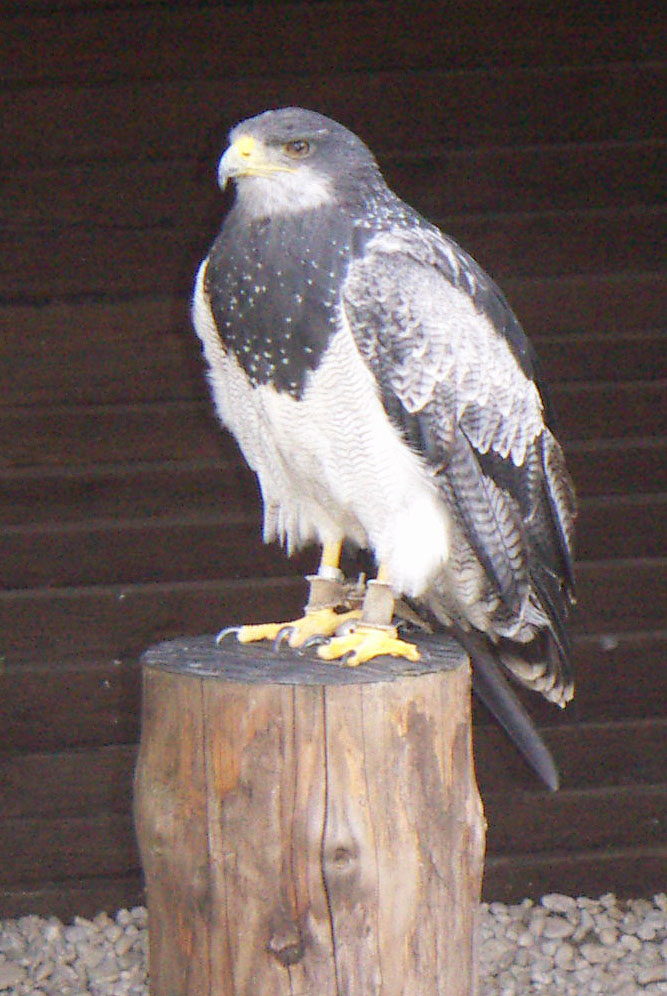|
| 질의: Buteo buteo buteo | 결과: 368번째/371 | |
Black-chested Buzzard-eagle (Geranoaetus melanoleucus) - Wiki
| 제목: | Black-chested Buzzard-eagle (Geranoaetus melanoleucus) - Wiki
| |

| 해상도: 667x996
파일크기: 176677 Bytes
촬영일: 2005:09:16 14:29:14
사진기: DiMAGE X31 (KONICA MINOLTA)
F number: f/3.7
Exposure: 1/100 sec
Focal Length: 141/10
등록시간: 2007:02:07 00:32:51
|
Black-chested Buzzard-eagle
From Wikipedia, the free encyclopedia
[Photo] Aguja, Blaufussbussard aufgenommen im Wildgehege Hellenthal, Eifel, Deutschland. Date 16.9.2006. Author Steffen Heinz (Caronna)
The Black-chested Buzzard-eagle (Geranoaetus melanoleucus[1]) is a bird of prey found in South America. It is the only member of the genus Geranoaetus. It belongs in the hawk and eagle family Accipitridae and is allied to the Buteo hawks.
With a length of 70-90 cm, it is quite a large eagle. The adult male has a white underside with fine blackish stripes. Upper parts are black with ash-grey-and-white zone on the wings, the silvery white seen clearly from afar. The female is distinguished by having reddish-cinnamon secondary upper and underwings and is larger than the male.
It is usually possible to make out the generally white underparts with the dark chest-band and tail but you are less likely to see its grey upperparts.
The Black-chested Buzzard-eagle is readily identified in flight by its short wedge-shaped tail scarcely protruding from its long, broad wings.
There are two subspecies: the nominate G. m. melanoleucos is found across southeastern South America from southern Brazil to northeastern Argentina, and is plain white below; G. m. australis occurs from Colombia and northwestern Venezuela south through the Andes to Tierra del Fuego, and in this race, the white abdomen is all-gray-barred.
It is found in mountainous or hilly terrain where it spends a lot of time soaring while looking for prey. This consists of mammals such as rabbits, some birds, snakes and carrion. It nests in high trees or on rocky cliffs.
http://en.wikipedia.org/wiki/Black-chested_Buzzard-eagle
| The text in this page is based on the copyrighted Wikipedia article shown in above URL. It is used under the GNU Free Documentation License. You may redistribute it, verbatim or modified, providing that you comply with the terms of the GFDL. |
|
^o^
동물그림창고 똑똑전화 누리집
^o^
|
|

